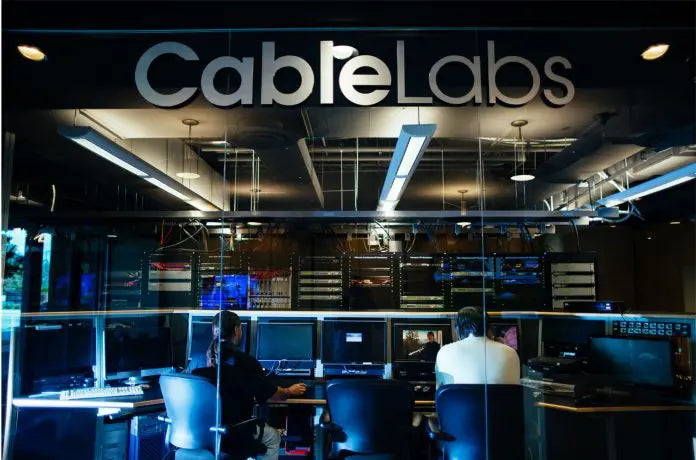This week i had a great conversation with Josh Redmore, Principal Architect at CableLabs, who said we're transitioning from the "speed era" to the "experience era" — where the focus is on seamless, low-latency connectivity.
As a reminder, CableLabs is a research and development organization that supports cable operators around the world. It focuses on building and testing new broadband technologies, including advancements in Wi-Fi, fiber, and low-latency networking. CableLabs works on setting standards and promoting open-source tools that help its members solve issues — like network performance, device compatibility, and vendor flexibility. Flagship programs include the 10G initiative for delivering 10 gigabit-per-second speeds with low latency across cable networks.
This shift towards the experience era demands more than just faster routers or wider spectrum. It calls for self-optimizing networks, intelligent onboarding, and above all, user experience that is intuitive and invisible. The recent IEEE approval of L4S (Low Latency Low Loss Scalable Throughput) for future Wi-Fi 8 standards shows the industry’s growing emphasis on latency and responsiveness over sheer bandwidth.
Vendor Lock-In: A Barrier to Innovation
Yet, even as the technology evolves, many service providers remain constrained by an outdated model — one plagued by vendor lock-in. Redmore offers a direct critique:
“To think that you can have one specific access point and one specific radio and one specific analytics engine, and that works for everybody, is just ridiculous.”
He adds that previously, “If you wanted to deploy a managed Wi-Fi solution… you had to buy a specific proprietary agent and put it on a specific box and have a specific cloud controller. That’s it. That’s all you can do.”
Such rigidity inhibits innovation, flexibility, and scalability — especially across global markets with widely varying network demands. In fact a recent survey by Maravedis Research of 65 MSPs commissioned by WiBUZ, highlights some key challenges they face:
- 65% say their current Wi-Fi platforms are too costly and complex to maintain.
- 75% rely heavily on vendor-specific management systems, which limit flexibility and scalability.
- Many MSPs dedicate between $200,000 and $500,000 annually on software customization and integration for these systems.
- Yet, 31% still struggle to achieve a unified vendor management interface.
- 32% cite a lack of skilled personnel as a significant barrier to growth.
The Rise of Open Source and TIP OpenWiFi
As a countermeasure to vendor lock-in, initiatives like TIP OpenWiFi are gaining traction. Josh shares that while CableLabs has not only joined TIP (Telecom Infra Project), but it has also tested OpenWiFi gear extensively:
“It’s really amazing to see a table full of different vendor access points talking to multiple different cloud controllers seamlessly.”
This interoperability — wall-mounted APs from one vendor coexisting with strand-mounted APs from another — represents a “massive lowering of the barrier to entry” for deploying managed Wi-Fi.
Magnus Johansson, CEO at WiBUZ which provides an operating system with a singlel pane of glass for multiple WIFI vendors, echoed similar sentiments, stating that “Open Wi-Fi gives operators the freedom to choose the best-of-breed components, avoiding lock-in and accelerating time-to-market for new features.”
Standardization: The Bedrock of an Open Future
While open source projects make headlines, Josh emphasizes standards.
“If you can standardize the collection of metrics, the transport of metrics, then you'll be able to use whichever device you want.”
This interoperability through common standards is foundational to building a single pane of glass— a unified dashboard that aggregates data across DOCSIS, fiber, Wi-Fi, and mobile networks. Without standard APIs and data models, even the most advanced software platforms risk becoming siloed.
The Role of AI in Managed Wi-Fi
AI is a natural complement to this open, data-rich environment. Redmore explains:
“We’ve spent years building massive piles of data… AI is great at dealing with large piles of data. It’s a natural progression.”
From anomaly detection to self-healing networks, AI will be key in automating and optimizing user experiences in real time. Both Josh and Magnus agree: AI-enhanced Wi-Fi isn’t just a luxury — it’s an inevitability.
A Vision for the Future: Self-Optimizing Networks
When asked what he would create with a magic wand, Redmore envisioned “perfectly self-optimizing Wi-Fi — coordinated, optimal spectrum usage, ease of onboarding, just everything… It just works.”
That’s the destination: frictionless, secure, and intelligent connectivity that users never have to think about. And to get there, we need to break the proprietary silos
Conclusion: The Call for Open Innovation
Wi-Fi is no longer a checkbox on a router. It’s the backbone of digital life. As the industry moves toward AI-driven, seamless experiences, the choice is clear: embrace openness or remain shackled by outdated vendor constraints.
As Magnus put it: “Freedom in architecture is freedom to innovate. Without it, we’re just recreating yesterday’s limitations in tomorrow’s networks.”
“The ultimate goal,” says Redmore, “is never think about Wi-Fi. You just use the services on the internet that you want to.”
Learn more about WIBIP OS
